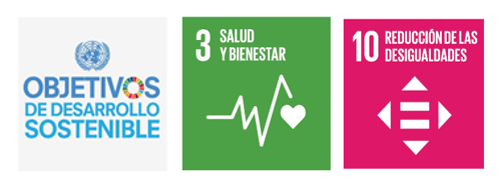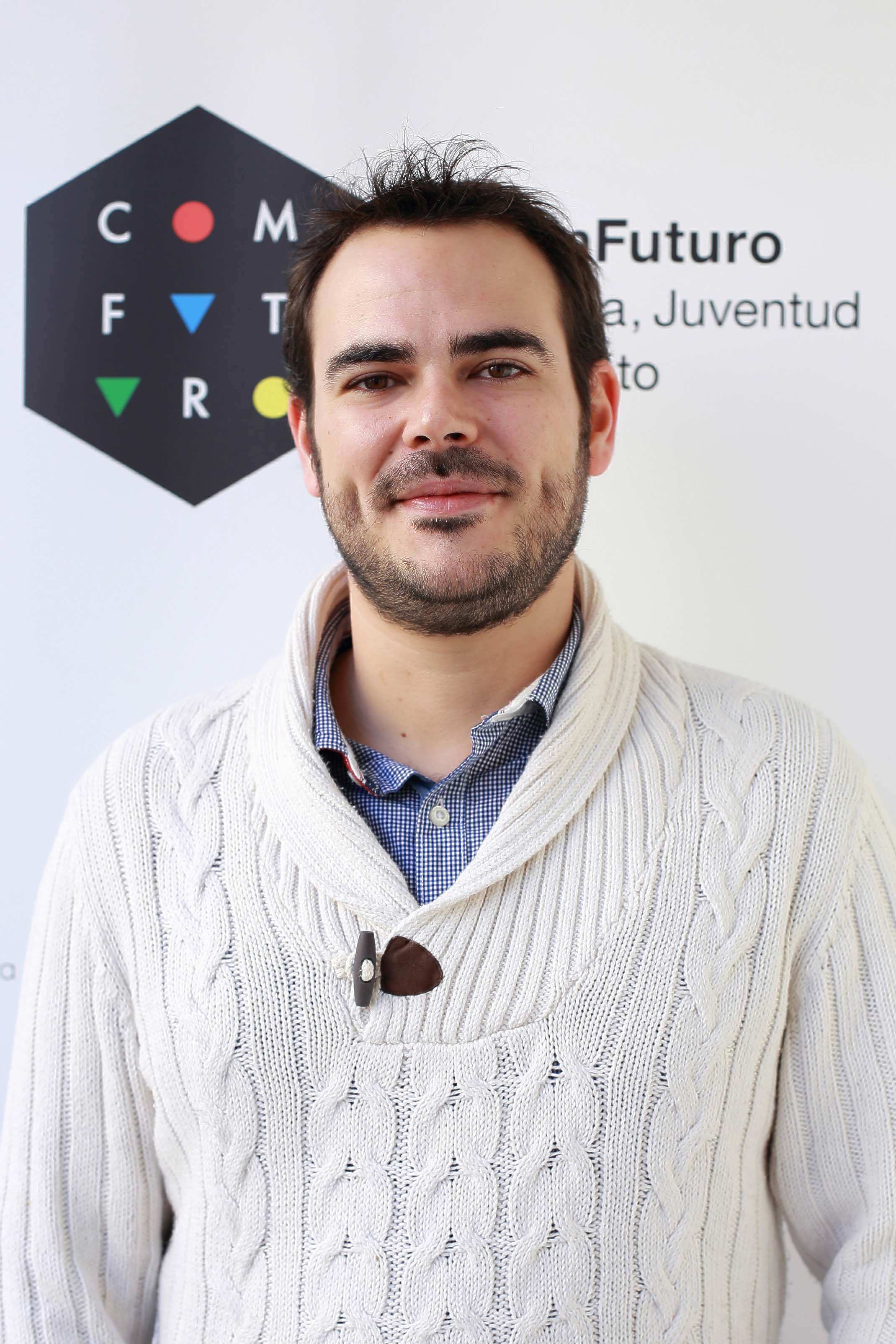
Eduardo Gil Santos is an experimental scientist specialising in the development of biosensors. In 2007, he started his research career at the Instituto de Microelectrónica de Madrid (CSIC), in the Bionanomechanics Laboratory, funded by the national grant “JAE-Predoc”. He completed his doctorate in Physics at the Autonomous University of Madrid in 2012, with the highest grade cum laude. His thesis dealt with the development of micro- and nano-mechanical sensors. In 2010, he spent a year at the Technical University of Denmark gaining experience in microfabrication. In 2013, he joined the Laboratory of Materials and Quantum Phenomena (Paris Diderot University, France) thanks to an international grant “Research in Paris”. There he developed his own line of research focused on the development of optomechanical sensors. He became an expert in optomechanics, as well as micro- and nanofabrication. In 2016, he returned to the Bionanomechanics Lab, at the Institute of Micro and Nanotechnology (formerly Instituto de Microelectrónica de Madrid), thanks to the European Marie Sklodowska-Curie Actions grants. Since February 2019 and until 2021, he was a ComFuturo researcher at the same institute, where he developed his project “Optomechanical biosensors for virus and bacterial characterisation“. After ComFuturo, he was awarded with a position as a Ramón y Cajal researcher.

Project Summary
Infectious diseases cause 25% of deaths worldwide and are the leading cause of infant mortality. These data are even more appalling in underdeveloped countries. Early identification of the pathogens (viruses or bacteria) causing an infection is essential to provide the patient with the most effective treatment as soon as possible. In addition, knowing the appropriate treatment for each pathogen is essential both for the patient and to prevent pathogens from developing resistance and diminishing the effectiveness of drugs.
At present, it is essential to develop technologies capable of identifying these pathogens more quickly, easily and effectively, allowing their detection even in the early stages of infection, when the concentration of pathogens is extremely low. In addition, it would be ideal if this technology would allow the study of the response of these pathogens to different drugs, which would allow the development of more specific and efficient treatments in less time.
The BioVIBA project proposes the application of sensors based on optomechanical resonators to meet this challenge. These devices possess excellent optical and mechanical properties that promise to revolutionise the field of biosensors. BioVIBA will be the first practical demonstration of such devices as biosensors.
Using optomechanical resonators, different viruses and bacteria will be detected and identified, characterising their optical and mechanical properties with unprecedented resolution. The most ambitious goal of the project will be to measure the changes in these properties while applying different drugs, allowing us to know how they act, and determining their efficacy. The technology developed during the project will make it possible to identify the pathogens causing an infection in its early stages and to develop new drugs that act more specifically for each pathogen.
Application: Infectious diseases cause 1 in 4 deaths worldwide. Techniques to identify the viruses or bacteria that cause these infections are too time-consuming. Sometimes, the treatment applied does not stop the infection, and may even worsen the patient’s condition. The project will develop sensors that, through their optical and mechanical properties, identify these pathogens in less than an hour. In addition, the devices will enable the development of more effective drugs.
Scientific production derived from the ComFuturo BioVIBA Project
Scientific articles
J. Molina; J. E. Escobar; D. Ramos; E. Gil-Santos; J. J. Ruz; J. Tamayo; A. San Paulo; M. Calleja (2021). High Dynamic Range Nanowire Resonators. NANO LETTERS. DOI: 10.1021/acs.nanolett.1c02056
J. J. Ruz; O. Malvar; E. Gil-Santos; D. Ramos; M. Calleja; J. Tamayo (2021). A review on theory and modeling of nanomechanical sensors for biological applications. PROCESSES. DOI: 10.3390/pr9010164
E. Gil-Santos; J. J. Ruz Martinez; O. Malvar Vidal; I. Favero; A. Lemaitre; P. Monteiro Kosaka; S. García-López; M. Calleja Gómez; J. Tamayo (2020). Optomechanical detection of low-frequency phonon modes of single bacterium. NATURE NANOTECHNOLOGY. DOI:10.1038/s41565-020-0672-y
J. Molina; D. Ramos; E. Gil-Santos; J. E. Escobar; J. J. Ruz; J. Tamayo; A. San Paulo; M. Calleja (2020). Optical transduction for vertical nanowire resonators. NANO LETTERS. DOI:10.1021/acs.nanolett.9b04909
A. Martin Pérez; D. Ramos Vega; E. Gil-Santos; S. García-López, M. López Yubero; P. Monteiro Kosaka; A. San Paulo; J. Tamayo De Miguel; M. Calleja Gómez (2019). Mechano-optical analysis of single cells with transparent microcapillary resonators. ACS SENSORS. Portada de la revista. https://pubs.acs.org/doi/10.1021/acssensors.9b02038
Works presented at conferences
E. Gil-Santos; J. J. Ruz; O. Malvar; D. Ramos; S. García-López; P. Kosaka; A. Lemaitre; I. Favero; M. Calleja; J. Tamayo. Optomechanical detection of single bacterium mechanical modes. 8th Multyfrequency AFM Conference. Oral presentation. Madrid, Spain. 27/10/2020-30/10/2020
E. Gil-Santos; J. J. Ruz; O. Malvar; D. Ramos; S. García-López; P. Kosaka; A. Lemaitre; I. Favero; M. Calleja; J. Tamayo. Optomechanical detection of single bacterium mechanical modes. Imaginenano 2020. Oral presentation. Bilbao, Spain. 29/09/2020-01/10/2020
E. Gil-Santos; J. J. Ruz; O. Malvar; D. Ramos; S. García-López; P. Kosaka; A. Lemaitre; I. Favero; M. Calleja; J. Tamayo. Optomechanical microdisks for biological sensing. Fall Meeting Materials Research Society 2019 (MRS 2019) Oral presentation. Boston, USA. 1/12/2019-6/12/2019
E. Gil-Santos; J. J. Ruz; O. Malvar; D. Ramos; S. García-López; P. Kosaka; A. Lemaitre; I. Favero; M. Calleja; J. Tamayo. Optomechanical biosensors. Trends in Nanotechnology 2019 (TNT 2019) Oral presentation. San Sebastián, Spain. 30/09/2019-4/10/2019
E. Gil-Santos; J. J. Ruz; O. Malvar; D. Ramos; S. García-López; P. Kosaka; A. Lemaitre; I. Favero; M. Calleja; J. Tamayo. Optomechanical microdisks for biological sensing. International Workshop on Nanomechanical Sensors 2019 (NMC 2019) Poster. Lausana, Switzerland. 19/06/2019-21/06/2019
